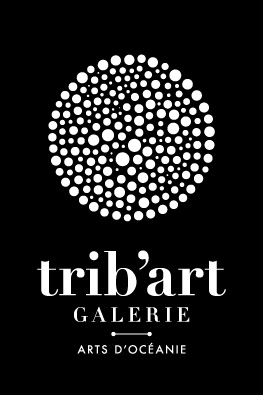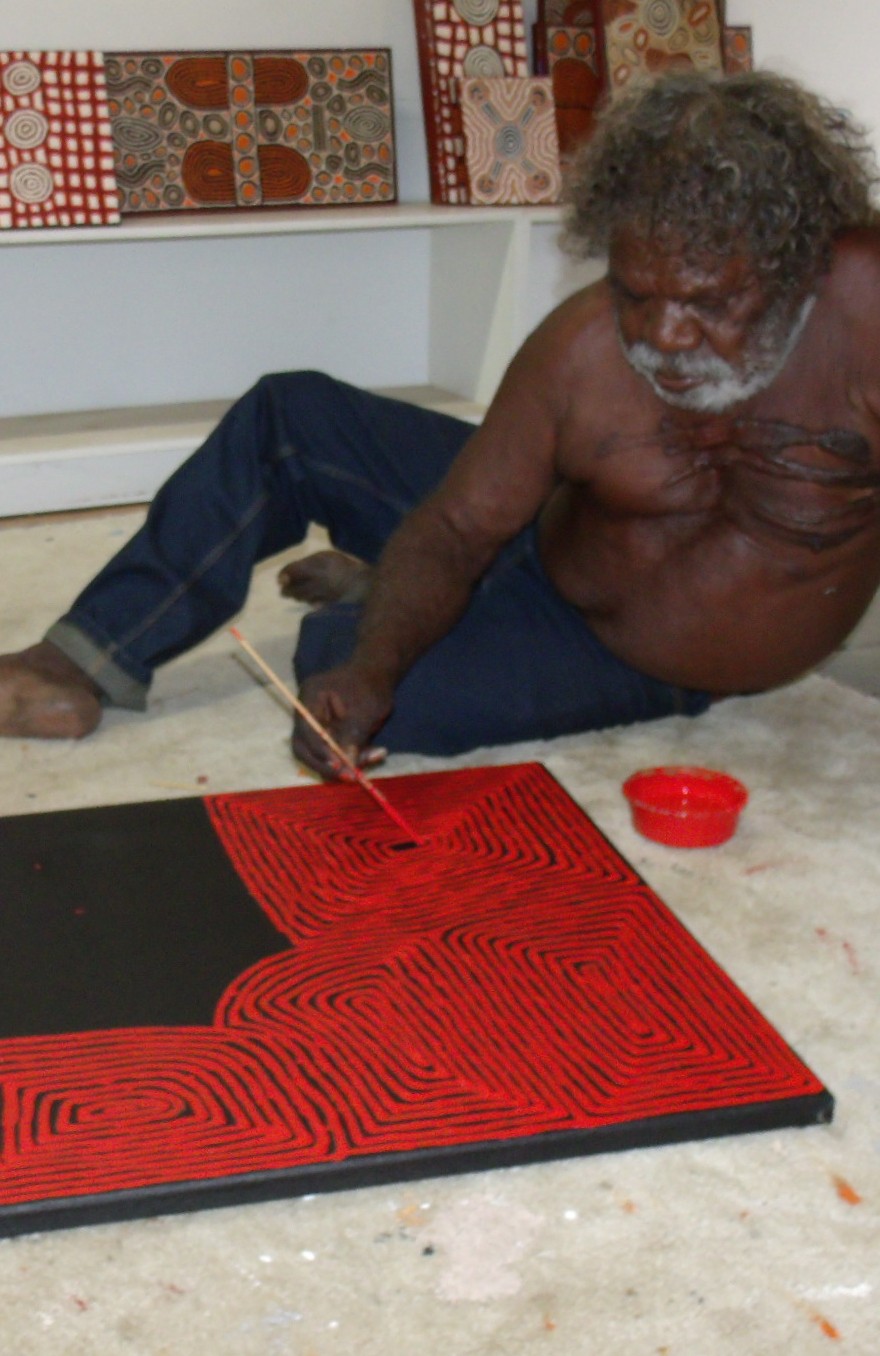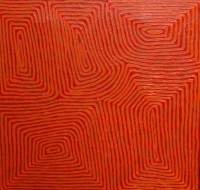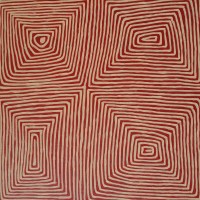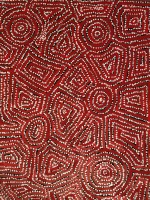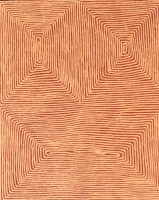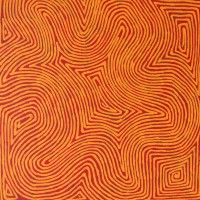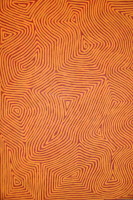George Tjungurrayi
George Tjungurrayi
Historical: George est né dans les années 1948 dans le désert à Wala Wala. Avec sa famille, il marchèrent jusqu’à Papunya via le Mont Doreen dans les années 60. Il a vécu à différents endroits incluant Yai Yai Creek, Warawa et le Mont Liebig. Actuellement, George réside à Kintore avec sa famille. Il est le jeune frère de Naata et Nancy Nungarrayi.
Painting: George a commencé à peindre à Papunya autour des années 1976. Depuis, il ne peint que des sujets en raport aux cycles « Tingari », symboles sacrés qui relatent les activités et coutumes des ancêtres. Les lieux sont d’importants sites de cérémonies pour le peuple Pintupi. Ces sites incluent Wala Wala, Kiwirrkura, Kulkuta, Karku, Kilpina et Wilkinkarra (Lac MacKay).
George peint ses motifs qui reflètent la manière dont ses ancêtres auraient sculpté et décoré des boucliers, boomerangs et lances. Les motifs géométriques, créant un effet de miroitement dans ses peintures représentent la puissance d’une protection forte pour son groupe familial.
Les deux tons de couleur clignotent face au spectateur et faussent la vision ce qui a pour effet de repousser les attaques des groupes tribus rivaux qui cherchent à voler les territoires ou souvent des femmes.
Les œuvres évoquent également le mouvement du paysage désertique, brume de chaleur, shifting sands et l’eau de crue rampante après pluies remplissant les rigoles d’argile.
Art australien – peintre aborigène – Peinture d’Australie
George was born in the desert at Mukula, west of Kiwirrkurra WA.
Language: Pintupi/Luritja
George was born in the desert close to Wala Wala, Kiwirrkurra, WA. He and his family walked to Papunya via Mount Doreen and Yuendumu in 1962. He has lived at various locations including, Yai Yai Creek, Warawa, and Mt Liebig. George now resides at Kintore with his family. He is the younger brother of Naata and Nancy Nungarrayi (Deceased).
He began painting at Papunya around 1976, since then his painting style has focused on the subject of Tingari, the sacred designs that relate to the activities of ancestral beings. The locations of these activities remain as important ceremony sites for the Pintupi people. These sites include Wala Wala, Kiwirrkura, Kulkuta, Karku, Kilpina and Wilkinkarra (Lake MacKay).
George paints in a manner that reflects the way that his forefathers would have carved and decorated shields, boomerangs and spear throwers. The geometric patterns creating a shimmer effect in his paintings represent the power of a strong protector for his family group, the two tones of colour flashing before the viewer and distorting vision is designed to repel attacks from rival tribal groups looking to steal territory or often women. The works also evoke the movement of the desert landscape, heat haze, shifting sands and the creeping flood water after rains filling the clay pans.
Represented:
National Gallery of Victoria
Art Gallery of New South Wales
Robert Holmes a’ Court Collection
Genesis and Genius, Art Gallery of New South Wales
Groninger Museum, the Netherlands
University of Virginia, USA
Musee des Arts d’Afrique et de’Oceanie, Paris
